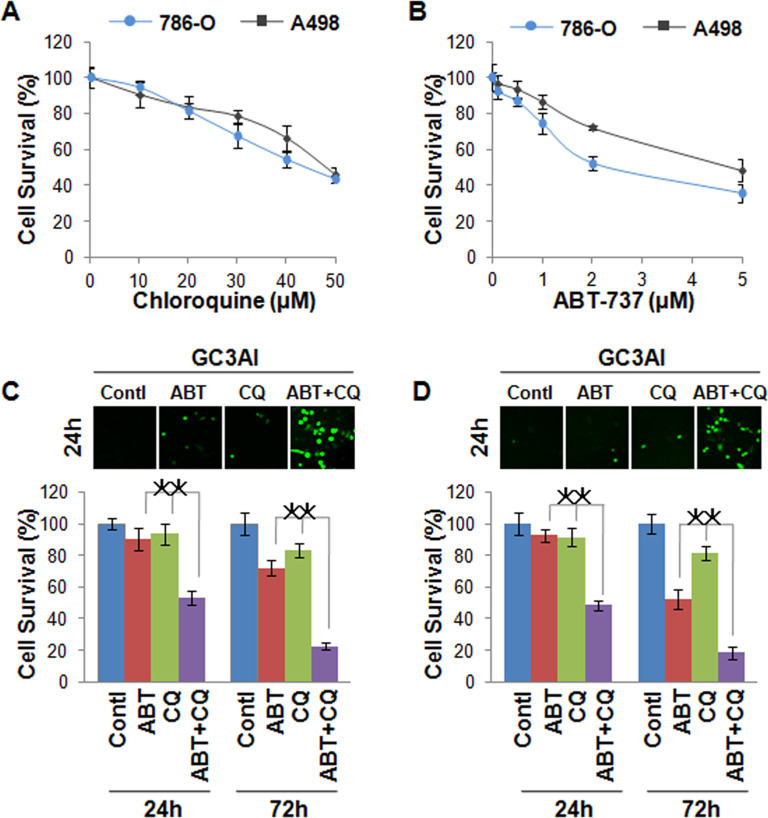Figure 1.
ABT-737 and chloroquine synergistically induce cell death in renal cancer cells. (A) The cell viability of 786-O and A498 cells after treatment with a different dose of chloroquine for 48 h detected by MTT; cell death increased in a dose-dependent manner. (B) The cell viability of 786-O and A498 cells after treatment with different doses of ABT-737 for 48 h detected by MTT; cell death increased in a dose-dependent manner. (C) Apoptosis of 786-O cells imaged by fluorescence microscope in 24 h (upper) and detected by MTT in 24 h and 72 h (lower) after treatment with 1 µmol/L of ABT-737 and 25 µmol/L of chloroquine alone or combination of these two reagents; 1 µmol/L of ABT-737 or 25 µmol/L of chloroquine alone induced only few apoptotic cells in 24 h and 72 h in 786-0 cells, but the combined treatment of ABT-737 and chloroquine induced more apoptotic cells. (D) Apoptosis of A498 cells imaged by fluorescence microscope in 24 h (upper) and detected by MTT in 24 h and 72 h (lower) after treatment with 1 µmol/L of ABT-737 and 25 µmol/L of chloroquine alone or a combination of these two reagents; 1 µmol/L of ABT-737 or 25 µmol/L of chloroquine alone induced only a few apoptotic cells, but the combined ABT-737 and chloroquine treatment induced more cell apoptosis. *p < 0.05.

